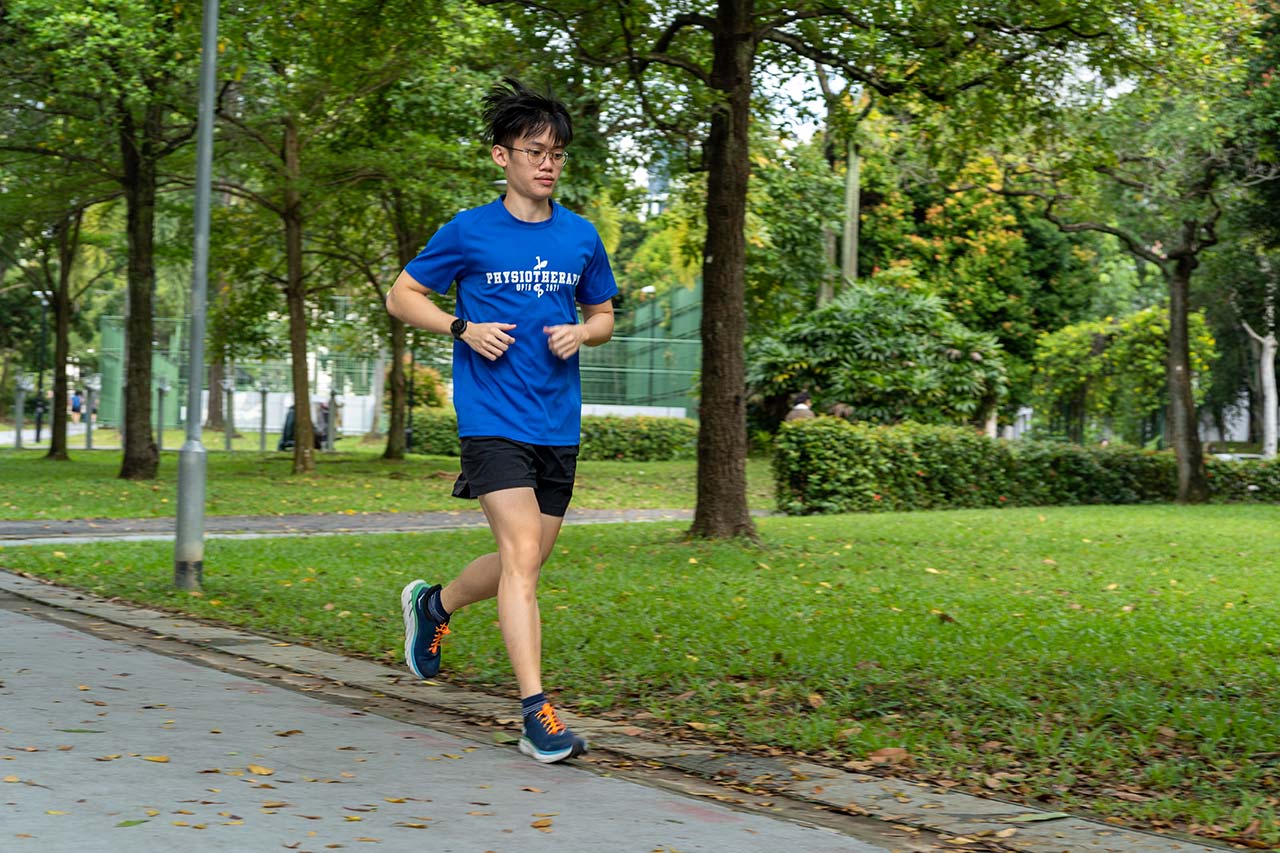Your Footstrike Pattern Doesn’t Always Remain the Same
Rearfoot-strike (RFS) is the most common footstrike pattern in long-distance runners, and runners tend to transition from non-RFS to RFS pattern as the distance of the run increases. A non-RFS pattern may offer performance benefits compared to RFS.
Reference
Bovalino, S., & Kingsley, M. (2021). Foot Strike Patterns During Overground Distance Running: A Systematic Review and Meta-Analysis. Sports Medicine – Open, 7(1). https://doi.org/10.1186/s40798-021-00369-9
Objective
Many prior studies on footstrike patterns placed participants on treadmills, so that the runner will be in a well-controlled lab environment to measure running kinematics. However, there is evidence that step length, stride frequency, foot contact time and the angle of the ankle at initial contact are different when comparing treadmill running with overground running (non-lab or treadmill running). This meant that the relationship between footstrike and running performance might not have been elucidated as clearly. Thus, this research aims to:
(1) establish the prevalence of rearfoot strike (RFS)
(2) assess the impact of increased distance on foot strike pattern change
(3) determine whether the non-RFS offers a performance advantage compared to RFS
What They Did
Studies were included if they:
- used cross-sectional cohort design
- conducted footstrike analysis at at least 1 checkpoint during the run
- involved overground running
- >10km total run distance
Studies were excluded if they:
- were conducted in a laboratory or on a treadmill
- were < 10 km total run distance
- captured footstrike before 2 km or within 1 km of the finish (so as to combat potential surges in speed which can influence foot strike pattern)
- used non-observational study design (intervention administered)
- used non-random sample of participants
Sample sizes ranged from 12 to 1991 participants, from years between 2007 to 2021. Three studies were based on elite cohorts, the remaining were performed on recreational cohorts. The total run distance varied from 10 km to a 161.1 km ultramarathon.
Seven studies analyzed footstrike patterns at at least 2 checkpoints during the run, 5 studies only analyzed footstrike pattern at 1 checkpoint. The distance at which the checkpoints were placed differs across studies.
What They Found
79% of long-distance overground runners employed rearfoot strike, with prevalence rising to 86% for longer distance runs.
11% of runners changed foot strike pattern with increased distance and of those, 84% changed from non-RFS to RFS while 16% changed from RFS to non-RFS.
5 studies reported a performance benefit to non-rearfoot strike, 1 study reported a performance benefit to non-rearfoot strike in women but not men, 4 studies reported no benefit to non-rearfoot strike or rearfoot strike, and no studies reported a performance benefit of RFS over non-RFS.
Conclusion
As the run distance increases, the prevalence of RFS also increases. Runners tend to switch from non-RFS to RFS running pattern later into the run, and there is either a positive or no performance benefit to running in a non-RFS pattern compared to a RFS pattern.
Practical Takeaways
While this study has shown that running distance affects footstrike pattern, other studies have also shown that footwear, running cadence and running speed can influence footstrike pattern as well*. It appears that footstrike pattern is not entirely a conscious preference that runners can self-select or permanently alter as they wish. Therefore, coaches who advocate for non-RFS need to be cognisant of the situational and biomechanical factors that make it more challenging to reinforce a non-RFS running pattern. Conversely, coaches who wish to alter a runner’s footstrike pattern can also recommend adjustments to more minimalistic footwear, and include high cadence and high speed workouts to encourage non-RFS pattern.
*more minimalistic footwear, higher running cadence and faster running speed promotes non-RFS pattern

